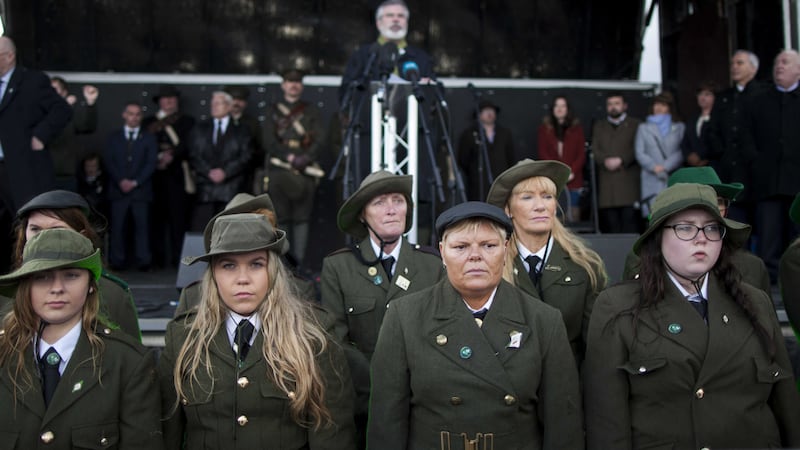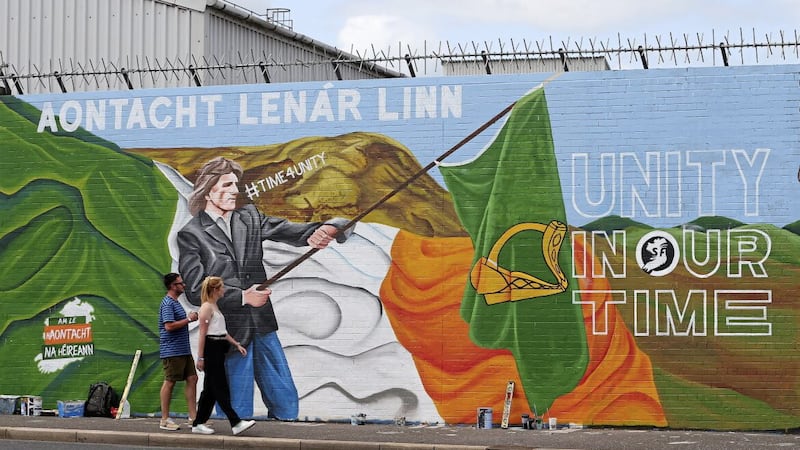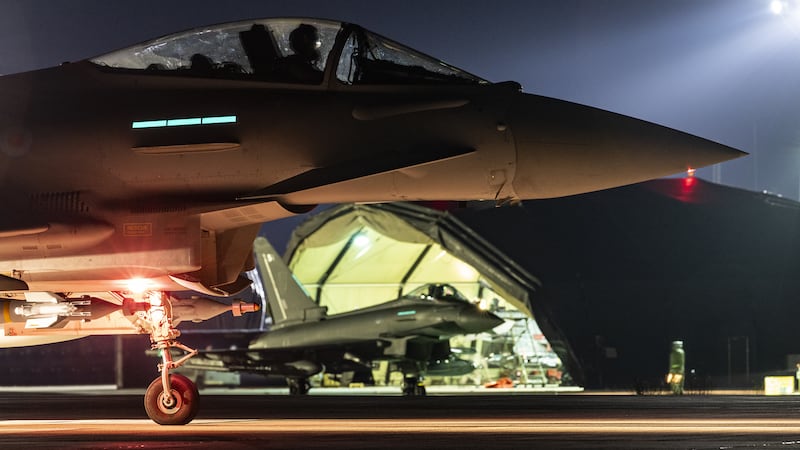MY memory is that I ended up, almost by accident, at the fiftieth anniversary of the 1916 Rising on Belfast's Falls Road.
My cousin Alfie Hutton asked me did I want to go. And I said I did. I was 12. My memory of it is hazy: crowds, colour and Casement Park.
I was 17 when I went to my second Easter parade in 1971. My memory of that is a riot, being cautioned by the IRA and wearing a James Connolly badge, like it was a fashion accessory to my Wranglers. I later learned about Connolly when I went to prison.
The riot started when the group I was with prevented two RUC officers from taking the tricolour off us which we were carrying openly over the Albert Bridge on our way home from the parade to the Short Strand.
It developed into a full scale riot with the British Army.
I thought we did well protecting the national flag but the local IRA had a different view. We were summoned to a meeting and told by them that "if you want to fight join the IRA".
Some did. Many at that meeting died over the next few years as IRA members. Others like me went to gaol.
The main memory I will have of the centenary anniversary of the 1916 Rising is the central part women played in the Rising. That is due to the images and information from a range of sources.
RTE's coverage of the Rising and its showing of The 1916 Irish Rebellion series scripted by Bríona Nic Dhiarmada and narrated by Liam Neeson; the documentary Seven Women, which was very good but omitted to mention the leading activist from Belfast, Winifred Carney; their very disappointing drama Rebellion which focused on three women; an excellent film called A Kind of Sisterhood, which accompanied an excellent exhibition, Women in Struggle, which was made by a group of women activists and former political prisoners known as `Macha's Legacy'; the `Richmond Quilt' with 72 squares - a square for each of the women arrested for their role in the 1916 Rising and held in Dublin's Richmond barracks; the powerful Belfast Rising play; and a series of lectures organised by Feile an Phobal as part of its Féile an Earraigh, Spring festival, which celebrated the centenary.
From historians Margaret Ward and Marie Coleman we learned that some 3,000 women were members of Cuman na mBan and that 300 participated in the Rising. That by 1917 there were 800 branches across Ireland and that Belfast was one of the most militant insisting on women members being trained as snipers.
In the Dublin of 1916, women were to the fore and at the centre of a melting pot of revolutionary organisations with the combined intent of changing Irish society in a pre and post-independence era.
These organisations included the Irish Volunteers, the Irish Citizen Army, the Dungannon Clubs, Inghinidhe na hÉireann (Daughters of Ireland), the Gaelic League and individual suffragettes and feminists like Hannah Sheehy Skeffington.
Women's influence can be seen in the actions of the Rising's two leaders: James Connolly and Padraig Pearse.
On Easter Monday in the basement of Liberty Hall, hours from the start of the Rising, Connolly proudly showed the first printed copy of the Proclamation to his daughters Nora and Ina, Winifred Carney and the Corr sisters, Elizabeth and Nell. They were the first to see it.
Minutes before Padraig Pearse led the rebels from the burning GPO he gathered them thanked them for their bravery and said that special mention had to be made for the part played by the women volunteers without whom the Rising would not have lasted as long as it did.
The `airbrushing' of women out of history was according to Margaret Ward and Marie Coleman made easier because of a lack of historical records.
Writing them back into the history of that period has been possible because the Bureau of Military History recently released their voluminous records of the time.
These include personal statements from over 140 women with many more documents about women seeking a war pension.
Now the women from this golden generation of men and women can, in this centenary year, take their place as heroes alongside their male comrades.
Historian Marie Coleman looks at the role of some of the lesser-known female participants in the Easter Rising








